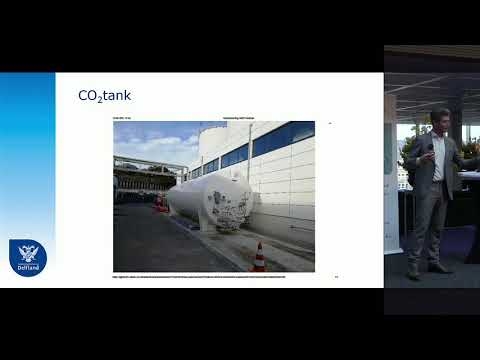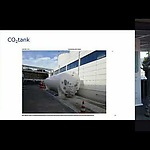Houtrust, the waste water treatment plant (WWTP) in the city of The Hague, has been developed from a simple mechanical WWTP built in 1967, into a sustainable modern biological WWTP nowadays. Houtrust feels like a tribute to the developments in wastewater treatment; wandering through corridors and various spaces you will come across many different pieces of technology, which shows the development of the past decades. Developments as a result of stricter legislation, of a better understanding of microbiology, and more insight into treatment processes. Or because of social necessity, like adaptations to reach the global sustainable goals.
After several earlier major renovations, Houtrust has recently undergone a transition towards a sustainable plant. One might think that energy optimization, heat recovery, production of biomethane and CO2 recovery are only feasible in newly built WWTPs. However, this project shows that with smart combinations, new technologies and commitment, older WWTPs can also contribute to energy transition and thus to mitigation of climate change.
Biomethane
A biomethane installation purifies biogas acquired from the sludge digestion tanks by means of cooling, activated carbon filters and using a membrane installation so that flows of biomethane gas and CO2 remains. After adding an odorant, the biomethane is fed into the gas grid, to provide in the need of sustainable energy sources.
However, when biomethane is fed into the gas grid, it is no longer available for the combined heat and power plants (CHPs) of the WWTP. Until recently, these CHPs supplied both power for the treatment process and the heat was used for digestion. Since the CHPs can no longer be used, the heat demand for the digestion of sludge has to be found elsewhere.
Heat study
In order to heat the digestion tanks in a sustainable way, a heat study was made, resulting in a package of measures that reduces the heat demand and made the heat supply more sustainable. This is achieved by an optimal cooling and heating balance, and a heat pump. Using redundant heat from the biomethane and CO2 recovery installation, introducing serial digestion and longer fermentation time, and if necessary extracting heat from effluent.
CO2
Another important part of the project is the CO2 recovery installation. Because the biomethane installation already separates the methane and CO2, it is relatively easy to liquify the CO2 to make it suitable for supplying to greenhouses in the area. Further quality improvements may even lead to more upcycled use of this green CO2 for example in the drinking water industry or the food and beverage industry.
In this way WWTP Houtrust has been upgraded into a sustainable energy hub. Delfland has decreased the CO2 footprint of Houtrust with 50%, where 1,9 million m3 biomethane and 2.000 ton of CO2 will yearly be delivered to the society.
Source: Helsen, O. 2021. The upgrade of a dated WWTP into a future proof sustainable energy hub. Wastewater, energy production and emissions, Clean Water & Ecosystem Restoration. AIWW 2021
In-person Conference

